I didn’t mention it yesterday, but there was one other structure that I saw at my newest outcrop on New 55. This is it:
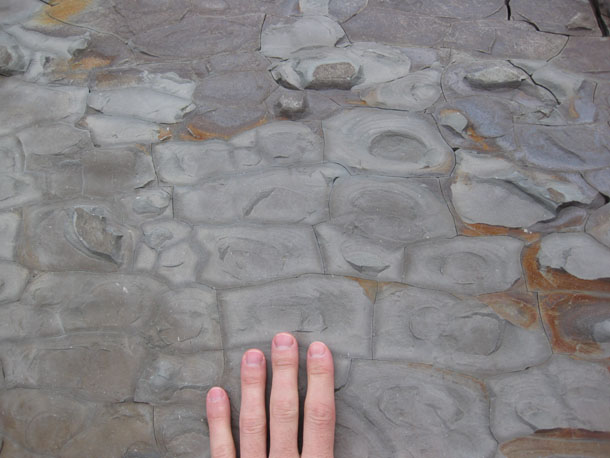

That’s a bunch of fractures. The broken rock is being altered by preferential fluid flow through the fractures. The fluid is not inert; it’s chemically active, and reacting with the rock. These reactions produce the color and weathering differences that you note in the previous images. (Notice how the cores of each block are more spheroidal than the original angular outer shape of the block defined by the fractures.)
We saw something similar at Baker’s Beach in California last month:
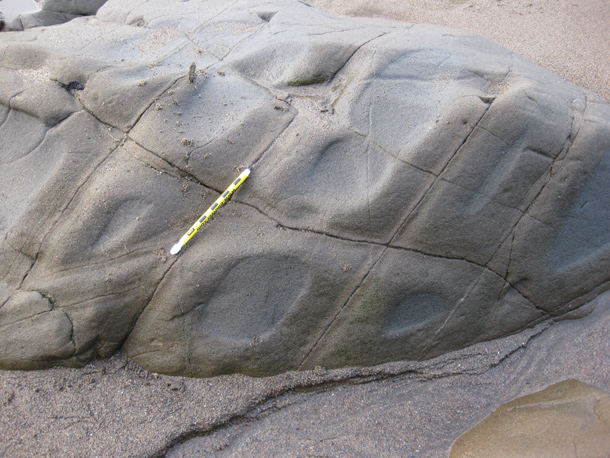
And of course, we saw something similar last May in Shenandoah National Park, Virginia:
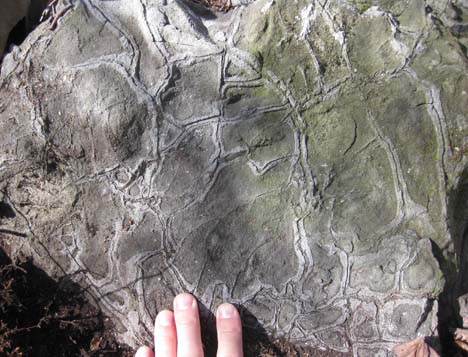
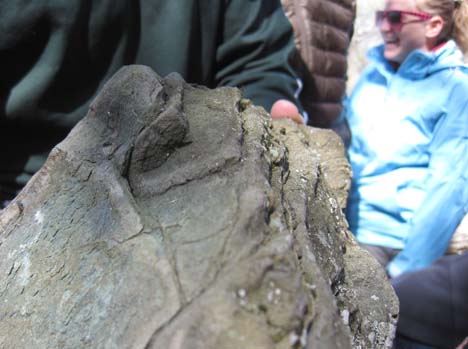
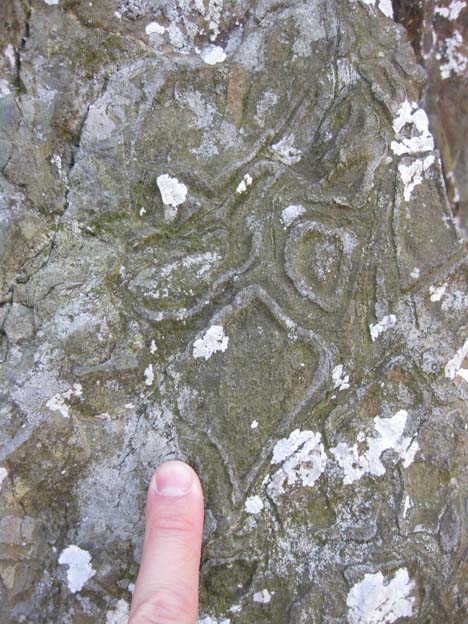
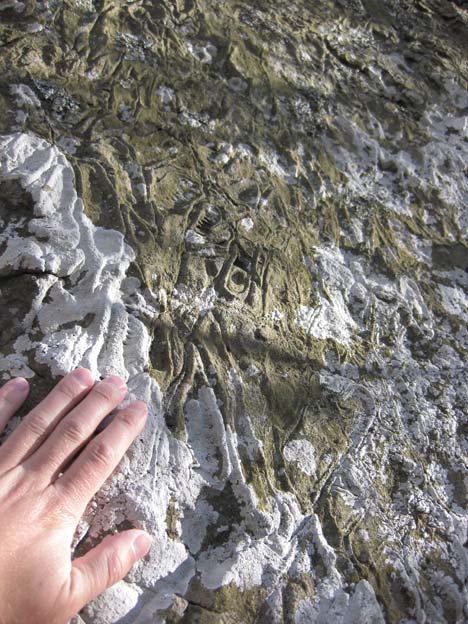
And then there is this example from the USGS Library in Reston, Virginia:
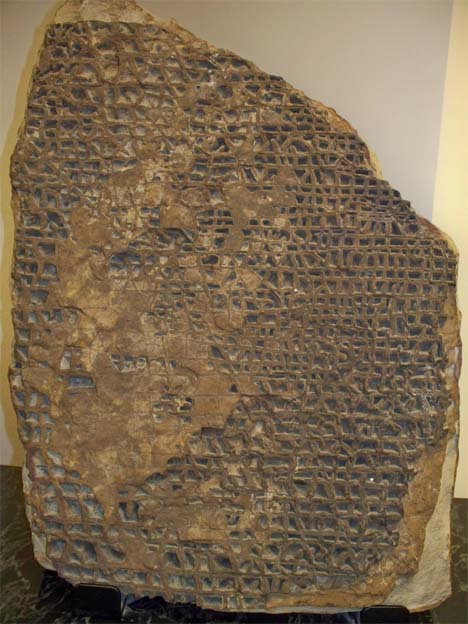
I just wanted to put all these photos together in one place (this post) and ask what I should call this phenomenon? I feel like it needs a good, evocative geologic name. The last example is dubbed “boxwork,” but I’m not sure that name really captures what’s going on in the top three locations.
Do we need to coin a neologism? Any nominations?

It looks like a kind of inverse spheroidal weathering. Like, spheroidal innie and spheroidal outie.
Boxwork is unfortunately already used for two different mineralogical/weathering textures – the “boxworks” left by quartz replacing calcite in quartz veins, and boxworks left by oxidation and weathering out of former sulfide minerals (the latter being the correct use, imo).
@sfoxx also suggests “rock cells” for the “cellular” pattern. Nice!
I think these are examples of “liesegang” weathering. Chemical diffusion creates more resistant rings.
This phenomenon occurs in both sedimentary and igneous rocks– anywhere that you can have diffusion.
Let me know if you think that’s right…
I’d argue that Liesegang banding doesn’t require fractures. The version I’m most familiar with is just due to diffusion through otherwise homogenous sandstone, as in “Kanab wonderstone” from Utah.
The thing that’s distinctive about my structures is that the fracture surface offers a pathway for enhanced fluid flow, and then you get the spheroidal effect working its way inward on the solid blocks in between the fractures.
I also think of liesegang in association with some kind of Fe-oxide pattern, but perhaps that’s not entirely correct.
Hmm… so maybe not liesegang. I’ve posted some similar pictures of some rocks from South Africa (where iron is definitely playing a role) here:
http://georneys.blogspot.com/2011/01/what-type-of-weathering.html
Totally similar — especially that first one!
Here’s an interesting article about liesegang banding: liesegang was apparently first used differently than used commonly today in geology.
I was just going to pile on that the last one definitely looks like a boxwork to me. Not sure I’d apply that term to the others, though.
I like “rock cells.” It’s similar to spheroidal weathering, in that it is operative along fractures; how about “cell weathering?”
this from a total wannabe, geology newbie. eggyolk pavers.
It seems to me that these photos contain 2, maybe 3 different types of sedimentary/weathering structures. The first 3 pics look like they could represent a frost/crystal wedging situation…water percolating in the semi-perpendicular joints freezes and cleaves sections of block away (California makes this a bit tricky though…). Those center sections of each “chamber” then being the last section of fracture (less weathered).
The next few pictures have a modified version of a structure I have seen a few times in Alabama near the Jumbo Dolomite. There, the carbonates fracture (on a similar scale) and silica is deposited in the joints. During the subsequent weathering the more resistant silica stands above the surface. In the photographed situation it appears as though the silica was deposited against opposing fracture surfaces but failed to completely fill the void.
This is a first approximation from internet photos so take it with a grain of salt 🙂
As far as naming these features I say lets google translate some Latin:
Broken boxes –>”Arca affligo”
or possibly
“Archa Quasso” not quite as fun to say though 🙂
I think I’d refer to most of this as joint-related weathering, with the possibility that some of it might be diagenesis or “concretionation,” if I may coin a word myself. A combination of weathering and cementation. Let’s go with “incipient concretionation.”
I have several fine “boxwork” specimens collected from the Sandhills of NC that I would love to share with anyone who might be interested. Please email me at jayetisman@gmail.com if you would like to see photos. I wish I could post them here! 🙁
Seems to me that this is closely related to case hardening.